Philippine comic books have nurtured talent for international TV and animation blockbusters, but the once-mighty industry is fighting to survive as it comes up against the Internet and other new media.
Comic books that dominated the Philippine publishing industry just a couple of decades ago are now largely relegated to photocopied titles sold in a few specialty stores and at conventions, veteran artist Rico Rival said.
“There are still a lot of good Filipino artists. They just don’t have an outlet anymore. They just photocopy their own works,” said Rival who has worked for local publications as well as US comic and animation companies.
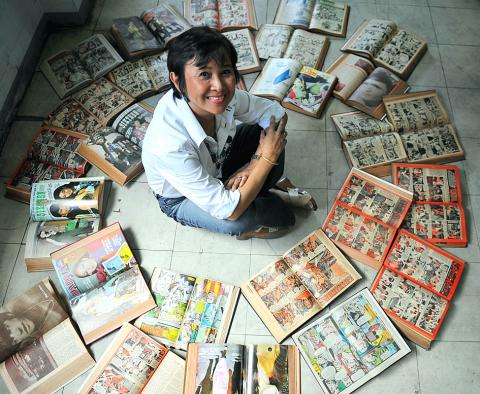
PHOTO: AFP
The 72-year-old Rival is now retired, but still indulges his passion by drawing occasionally for Philippine magazines and doing commissioned art at conventions.
Local comic books, popularly known as komiks were once the most widely read periodicals in the country, with dozens of titles sold on newsstands every day. Terry Bagalso, editor of Atlas Publishing, once the country’s largest komiks publisher, recalled that in the 1980s, at the height of the industry’s popularity, his company was printing 30 titles a week.
Its top-selling titles easily sold 400,000 copies a week with total komiks circulation in the millions.
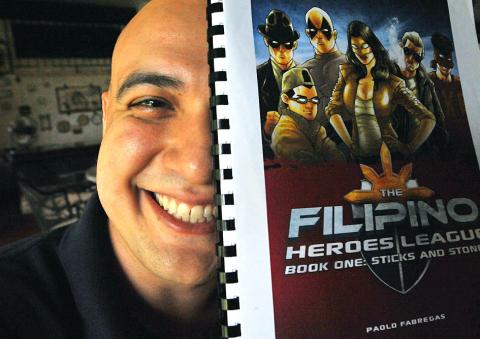
PHOTO: AFP
“We had to send out an armored car to collect our sales earnings,” she said.
These komiks — printed in black and white on cheap newsprint — presented serialized stories in a wide variety of genres, including romance, horror, super-heroes, historical adventure, fantasy, comedy and fairytales.
Sold largely by street vendors, they appealed mainly to the poor masses and cost just a few centavos (less than US$0.01), far cheaper than a movie ticket or other forms of popular entertainment.
Komiks characters such as superheroine Darna, the mermaid Dyesebel and the monster--slaying “Panday” (the Blacksmith) are still household words in the Philippines and live on in TV series and movies.
The artists who worked on these komiks caught the attention of US companies such as Marvel and DC Comics, which started recruiting them in the 1970s to work on characters including Batman and Conan the Barbarian.
“They were amazed that Filipinos were very good illustrators. They thought there was an art school that trained us and then they came here and they found that we just influenced each other,” Rival said.
Many Filipino artists then went on to produce cartoons for companies such as Disney, Nickelodeon and Cartoon Network. Today, Filipino artists can be found working on big-screen animation projects such as the Toy Story series.
However, despite that success, komiks have virtually disappeared from Philippine newsstands.
The consensus is that komiks lost their audience as Filipinos turned to more modern forms of entertainment, such as TV, videogames, DVDs and the Internet.
“It is the technology. With one click on the computer, you can get anything. So instead of -reading komiks, people like computers, cellphones and other things,” Bagalso said.
There have been various attempts to revive komiks in recent years, but none have had much success.
Alexie Cruz, editor of PSICOM, a local publisher, said his company’s last komiks foray two years ago — a comedy title called Topak (Nutty) — fell victim to poor sales after just two issues.
“One of the main problems is the bookstores don’t cater to komiks by Filipino publishers. They give them very little space,” he said.
Ironically, PSICOM’s big sellers are magazines of manga, or Japanese comics, as well as licensed reprints of DC Comics titles — which do get shelf-space in local bookstores, Cruz said.
However, local creators won’t give up. Some publishers still come out with their own home-grown “graphic novels” — extended stories told in comic format.
Philippine publisher Visprint is producing one such effort next year: Filipino Heroes League, a semi--comedic tale by artist-writer Paolo Fabregas who puts superheroes into a developing world setting.
“They’re underfunded, unappreciated and generally unwanted ... like Kid Kidlat [Kid Lightning]. He’s super-fast and super-poor,” Fabregas, 32, said with a laugh.
Like many other aspiring Filipino komiks artists, Fabregas started out either putting his stories on the Internet or selling home-made copies.
His main job is in advertising and he describes his komiks work as “a glorified hobby.”
Komiks artist Gener Pedrina said he and other creators just drew the stories, printed them with a photocopier, stapled them by hand and then sold them on their own.
He described his products as “labors of love,” because they take so much time, but make barely enough to break even.
Pedrina’s superhero title, Sanduguan, (Blood Brothers) and other komiks like Zombies in Manila and Gerilya (Guerrilla) komiks, are sold at the handful of comic conventions held in the Philippines each year.
While these titles may not have the polish of their predecessors, Rival said they still kept the tradition alive.
“Komiks is still here. It won’t go away. There may not be publications, but artists can come up with their own komiks. You cannot restrain their creativity,” he said.
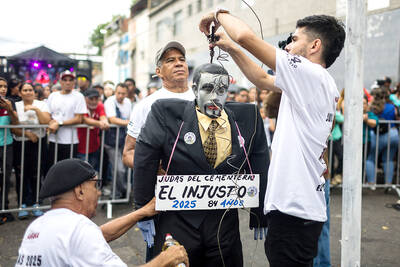
POLITICAL PRISONERS VS DEPORTEES: Venezuela’s prosecutor’s office slammed the call by El Salvador’s leader, accusing him of crimes against humanity Salvadoran President Nayib Bukele on Sunday proposed carrying out a prisoner swap with Venezuela, suggesting he would exchange Venezuelan deportees from the US his government has kept imprisoned for what he called “political prisoners” in Venezuela. In a post on X, directed at Venezuelan President Nicolas Maduro, Bukele listed off a number of family members of high-level opposition figures in Venezuela, journalists and activists detained during the South American government’s electoral crackdown last year. “The only reason they are imprisoned is for having opposed you and your electoral fraud,” he wrote to Maduro. “However, I want to propose a humanitarian agreement that
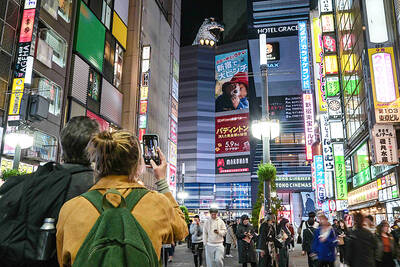
Young women standing idly around a park in Tokyo’s west suggest that a giant statue of Godzilla is not the only attraction for a record number of foreign tourists. Their faces lit by the cold glow of their phones, the women lining Okubo Park are evidence that sex tourism has developed as a dark flipside to the bustling Kabukicho nightlife district. Increasing numbers of foreign men are flocking to the area after seeing videos on social media. One of the women said that the area near Kabukicho, where Godzilla rumbles and belches smoke atop a cinema, has become a “real
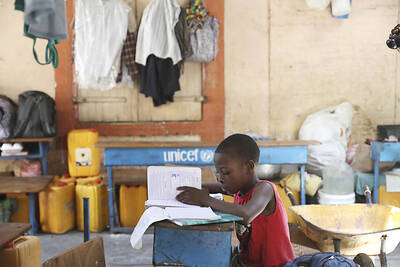
‘POINT OF NO RETURN’: The Caribbean nation needs increased international funding and support for a multinational force to help police tackle expanding gang violence The top UN official in Haiti on Monday sounded an alarm to the UN Security Council that escalating gang violence is liable to lead the Caribbean nation to “a point of no return.” Special Representative of the UN Secretary-General for Haiti Maria Isabel Salvador said that “Haiti could face total chaos” without increased funding and support for the operation of the Kenya-led multinational force helping Haiti’s police to tackle the gangs’ expanding violence into areas beyond the capital, Port-Au-Prince. Most recently, gangs seized the city of Mirebalais in central Haiti, and during the attack more than 500 prisoners were freed, she said.
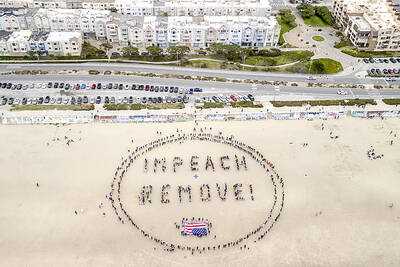
DEMONSTRATIONS: A protester said although she would normally sit back and wait for the next election, she cannot do it this time, adding that ‘we’ve lost too much already’ Thousands of protesters rallied on Saturday in New York, Washington and other cities across the US for a second major round of demonstrations against US President Donald Trump and his hard-line policies. In New York, people gathered outside the city’s main library carrying signs targeting the US president with slogans such as: “No Kings in America” and “Resist Tyranny.” Many took aim at Trump’s deportations of undocumented migrants, chanting: “No ICE [Immigration and Customs Enforcement], no fear, immigrants are welcome here.” In Washington, protesters voiced concern that Trump was threatening long-respected constitutional norms, including the right to due process. The